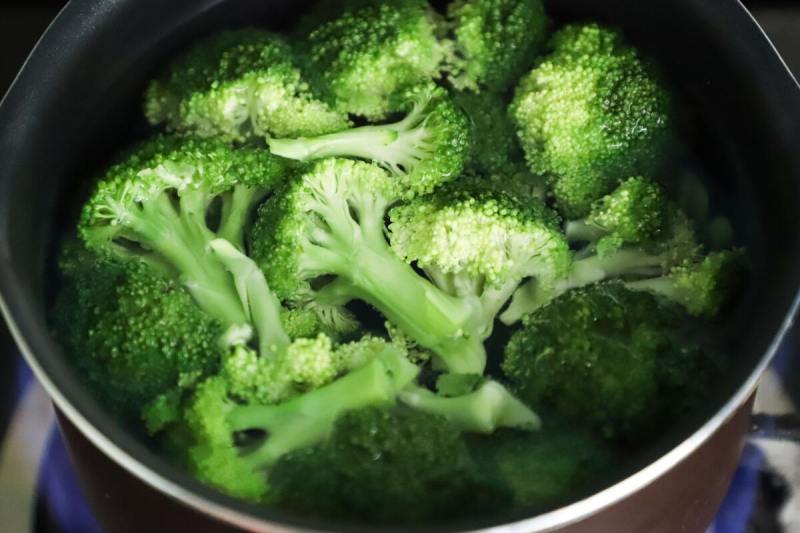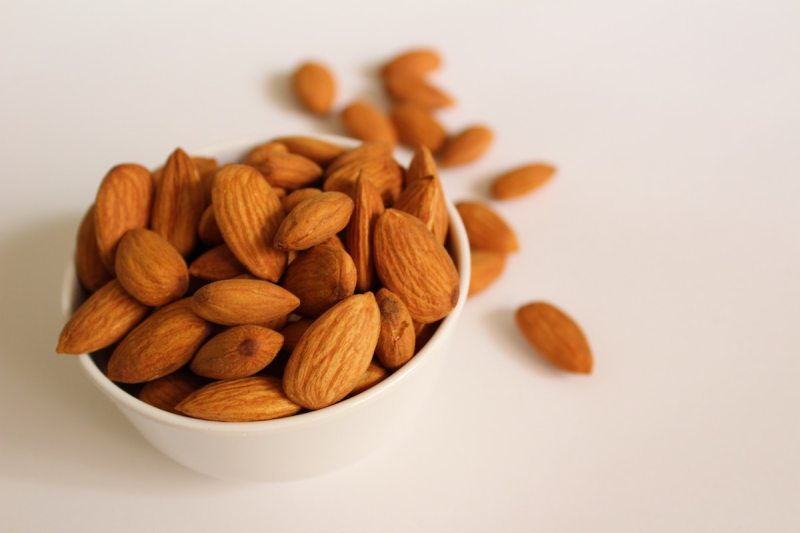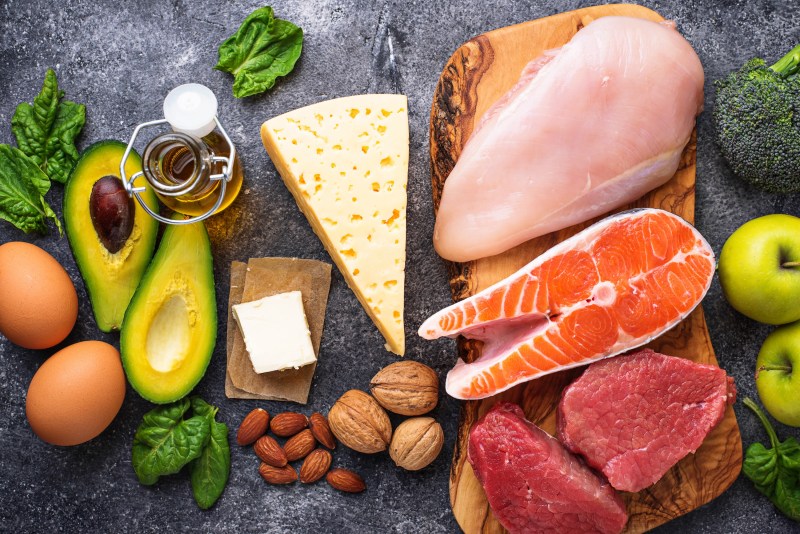Are you looking to optimize your digestion and other aspects of your health? Fiber can play a big role in how you feel. As a nutritionist, I always encourage my clients to make fiber a daily focus, as it contributes to weight management and more. But what if you’re also sticking to a low-carb diet while trying to eat enough fiber?
Keep reading to learn about 13 foods high in fiber and low in carbs to reach all your health goals and feel your best.
What is fiber?

Fiber is a type of carbohydrate that the body can’t completely digest, and it’s found in plant-based foods. The two different types of fiber are soluble and insoluble, and they pass through the digestive system largely intact. The two variations differ because soluble fiber dissolves in water and creates a gel-like substance, while insoluble fiber maintains its form and adds bulk to stool.
Fiber is present in fruits, vegetables, whole grains, nuts, seeds, and legumes. Unlike other forms of carbohydrates, fiber is not broken down into sugar molecules. Instead, it moves through the intestines, interacting with water and gut bacteria. Different foods contain varying amounts and types of fiber, contributing to your overall daily intake.
What are the benefits of fiber?

Aids in weight management
Fiber-rich foods keep you fuller for longer, which helps keep hunger at bay and reduces your overall calorie intake. Since fiber takes longer to digest, it can help prevent overeating. Many high-fiber foods are naturally lower in calories yet more satisfying, making them beneficial for maintaining a healthy weight.
Supports heart health
Soluble fiber helps lower cholesterol levels by binding to bile acids, which contain cholesterol and removing them from the body. In fact, the National Lipid Foundation shares that “Eating 5 to 10 grams of soluble fiber a day can help lower total and LDL-cholesterol by 5 to 11 points, and sometimes more.”
High-fiber diets are also linked to lower blood pressure and reduced inflammation, so fiber can be a great tool for anyone looking to improve their heart health.
Promotes digestive regularity
Fiber is most well known for how it positively affects your gut. As we mentioned before, insoluble fiber adds bulk to stool. This helps prevent constipation and supports regular bowel movements.
Can a food be high in fiber and low in carbs?

Because fiber is technically a carbohydrate, how can a food be high in fiber and low in carbs? Well, fiber itself is a type of carbohydrate that the body does not fully digest or convert into glucose.
Since fiber passes through the digestive system without significantly affecting blood sugar, it is often subtracted from the total carbohydrate count of food to calculate net carbs. Foods that contain mostly fiber with minimal digestible carbs have a low net carb count. For reference, you may see on a food label that “total carbohydrate” is mentioned; “dietary fiber” and “Total sugars” are specified beneath it.
Additionally, some plant-based foods are naturally rich in fiber while containing very few starches or sugars, making them ideal for low-carb diets while still providing the benefits of fiber intake.
13 high-fiber, low-carb foods to include in your meals

- Chia seeds: Chia seeds are packed with fiber, with about 10 grams of fiber per ounce. They are versatile and are easy to add to things like smoothies, yogurt, or pudding. Another bonus is that they are rich in omega-3 fatty acids.
- Flaxseeds: Flaxseeds are high in fiber and low in carbs, offering 8 grams of fiber per ounce. They also contain healthy fats and antioxidants, making them an excellent addition to baked goods or smoothies.
- Avocados: Avocados provide 10 grams of fiber per medium fruit, along with healthy monounsaturated fats. They’re perfect for salads, smoothies, or as a spread, offering both fiber and a rich texture.
- Almonds: Almonds are a fiber-dense food or snack, offering 3.5 grams of fiber per ounce, and are low in carbs. They make a great snack, providing healthy fats and protein.
- Spinach: Spinach is a fiber-rich, low-carb vegetable with around 1 gram of fiber per cup when cooked. It’s perfect for salads, soups, or smoothies, adding bulk and nutrients.
- Broccoli: Broccoli contains around 5 grams of fiber per cup. It can be steamed, roasted, or added to casseroles, offering a fiber boost without many carbs.
- Cabbage: Cabbage is a low-carb, fiber-packed vegetable. One cup of cooked cabbage offers about 5 grams of fiber, which is ideal for stir-fries or salads.
- Zucchini: Zucchini offers about 2 grams of fiber per cup and is low in carbs. It’s a versatile vegetable that can be grilled, sauteed, or spiralized into noodles.
- Brussels sprouts: Brussels sprouts provide 4 grams of fiber per half cup. These can be roasted or sauteed to enhance their flavor and texture.
- Berries: Berries like raspberries and blackberries are low in carbs and offer around 8 grams of fiber per cup. They’re great for smoothies, parfaits, or as a topping for yogurt.
- Psyllium husk: Psyllium husk is a high-fiber supplement, offering 6 grams of fiber per tablespoon. It’s often added to smoothies or baked goods for an extra fiber boost.
- Cauliflower: Cauliflower provides about 3 grams of fiber per cup and is low in carbs. It can be roasted, mashed, or used as a rice substitute.
- Mushrooms: Mushrooms are a low-carb, high-fiber food that has around 1-2 grams of fiber per cup. They’re great for adding texture and flavor to salads, stir-fries, or soups.
Why would someone want to follow a low-carb diet?

People follow a low-carb diet for various reasons, but the most common include having a weight loss goal, wanting to control blood sugar levels, and improving energy throughout the day. Reducing your carbohydrate intake can help regulate insulin levels, making it beneficial for someone with diabetes or insulin resistance.
Many people also find that eating fewer carbs reduces cravings and hunger, making it easier to maintain a calorie deficit for weight management. However, some people thrive on a low-fat diet rather than low-carb; it can really depend on the person.
You may also find that a low-carb diet improves mental clarity and reduces inflammation throughout the body. Additionally, low-carb eating patterns, such as ketogenic diets, promote fat-burning for energy, which can be helpful for those seeking metabolic efficiency or increased endurance in physical activities.
Overall, there can be many benefits to a low-carb diet, but it is generally recommended to consume enough of each macronutrient daily for optimal health.
Frequently asked questions

What foods are the highest in fiber?
High-fiber foods include beans, lentils, chickpeas, chia seeds, flaxseeds, and whole grains like oats and quinoa. Vegetables such as broccoli, Brussels sprouts, and carrots are fiber-rich foods, as well as fruits like raspberries, pears, and apples. Nuts, almonds, and avocados also provide fiber, promoting optimal digestion and overall gut health.
What is a high-fiber, low-carb breakfast?
An example of a high-fiber, low-carb breakfast could include chia seed pudding with unsweetened almond milk, flaxseeds, and berries. Scrambled eggs with spinach and avocado provide fiber and healthy fats. Other options include Greek yogurt with hemp seeds and walnuts or a smoothie with kale, protein powder, and coconut milk.




